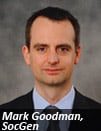European legislators’ amends to MiFID II and a US regulatory probe into high-frequency trading (HFT) aimed at harmonising market access could have unintended consequences for liquidity, observers fear.
In its proposed revisions to MiFID II, the European Parliament’s Economic and Monetary Affairs (ECON) Committee proposed banning direct electronic access, a practice that allows trading firms to gain speedy access to markets using a broker’s infrastructure. ECON also states that co-location, i.e. placing trading systems as close as possible to exchange platforms to gain a latency advantage, should be offered on a “non-discriminatory, fair and transparent basis”. The ECON proposals impose a minimum resting period of 500 milliseconds on all orders and cancellation fees for market participants that cancel a high proportion of their orders. The document also contained a detailed definition of HFT.
The amendments are the latest sign of moves in the region to moderate the rapid rise of HFT, which accounts for around 30% of overall European trading volumes, and equalise market access for other market participants.
“The aim essentially is to level the playing field,” said Mark Goodman, head of Quantitative Electronic Services at Société Générale Corporate and Investment Banking. “There is a recognition that to some extent technological innovation is driving changes to market structure faster than the legislative process can handle.”
But Goodman cautioned that some of these amendments, while well-intentioned, may not yield the benefits that regulators expect.
“Some clauses, particularly a minimum resting period have the potential for unintended consequences,” he said. “Slowing down orders in this way simply means quotes will rest for longer, offering more opportunities for aggressive HFT strategies.”
Rebecca Healey, senior analyst at consultancy TABB Group, said the proposals would hamper liquidity provision.
“You cannot categorise everyone into simplified buckets,” she said. “A minimum resting period will restrict the ability of traders to react to market conditions and will therefore act as a disincentive to post liquidity.”
She added that the proposal could also favour national exchanges that typically have the bulk of liquidity over alternative venues because a minimum resting period could make likelihood of execution a more important factor than price when deciding where to route orders.
Goodman also considered that legislative attempts to temper HFT could easily impact use of algorithms provided by brokers to their buy-side clients.
“Whilst there are clearer definitions between the two there is still plenty of language which continues to merge the two activities which will result in confusion,” he said.
Developments in Europe chime with work reportedly being carried out by the US’s Securities and Exchange Commission (SEC) into advantages to low-latency traders over other market participants arising from existing market structure.
These include exchange order types that allow HFT firms to effectively jump the queue when searching for liquidity, fee structures that offer rebates and the relationship between HFT firms and trading venue operators. Many HFT firms such as market makers GETCO and Citadel also have strategic investments in alternative venues.
The SEC has been examining ways to better control HFT and other forms of electronic trading since the flash crash on 6 May 2010, when a single algorithmic order sent US markets tumbling in the space of around 20 minutes, before rebounding just as quickly.
